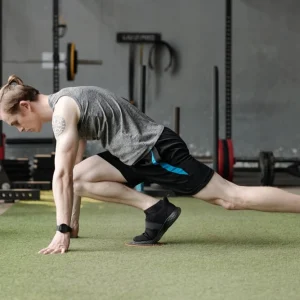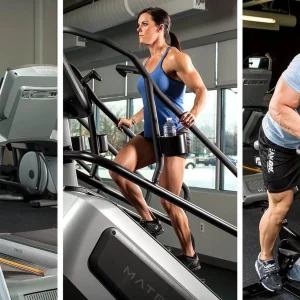When it comes to building a strong lower body, most fitness enthusiasts focus on exercises like squats, deadlifts, and lunges. However, one powerful yet often overlooked movement deserves your attention: the good morning exercise. This exercise targets the posterior chain, including the hamstrings, glutes, and erector spinae, and plays a crucial role in improving hip mobility and preventing muscle imbalances.

Content
What Is the Good Morning Exercise?
The good morning exercise is a classic hip hinge movement that emphasizes strengthening the muscles along the back of your body. By bending forward at the hips with a slight bend in your knees, you engage your hamstrings and glutes while training your lower back to stabilize and control the motion. This functional movement pattern mimics daily activities like bending and lifting, making it excellent for both athletes and beginners.
Anatomy Worked by the Good Morning Exercise
Understanding the muscles involved can help you appreciate why this exercise is so valuable:
- Hamstrings: These muscles at the back of your thigh act to bend the knee and extend the hip.
- Gluteus Maximus: The largest glute muscle powers hip extension.
- Erector Spinae: A group of muscles along your spine that support posture and back extension.
- Core Muscles: The abdominals and obliques stabilize your torso during the movement.
Strengthening these muscles enhances overall posture, athletic performance, and injury resistance.
Benefits of the Good Morning Exercise
Incorporating the good morning exercise into your strength training routine offers several benefits:
- Improves posterior chain strength: This exercise targets key muscles that support your spine and hips, helping you build a solid foundation for other lifts like deadlifts and squats.
- Enhances hip mobility: Regular practice helps increase the range of motion around your hips, which is essential for athletic performance and daily movement efficiency.
- Reduces risk of injury: Strengthening the erector spinae and hamstrings helps balance your muscles, which may prevent strains and lower back pain.
- Corrects muscle imbalances: The good morning targets muscles often neglected in typical workouts, contributing to balanced muscle development.
- Boosts athletic performance: It’s particularly useful for runners, lifters, and anyone involved in sports requiring hip power and stability.
- Supports better posture: Strengthening the posterior chain promotes spinal alignment and counters the effects of prolonged sitting.
How to Perform the Good Morning Exercise with Proper Form
Executing the good morning with proper form is vital to maximize benefits and avoid injury. Follow these steps:
- Set up: Stand with your feet shoulder-width apart. Place a barbell across your upper traps or use a resistance band or bodyweight if you’re a beginner.
- Engage your core: Tighten your abdominal muscles to stabilize your spine.
- Hinge at the hips: Keeping a slight bend in your knees, push your hips backward as you lower your torso forward. Maintain a flat back and keep your chest lifted.
- Lower until you feel a stretch: Descend until your torso is almost parallel to the floor or you feel a comfortable stretch in your hamstrings.
- Return to start: Drive your hips forward to stand back up, squeezing your glutes at the top.
- Repeat: Perform 3 sets of 8–12 reps, adjusting weight and depth based on your experience.
Common Mistakes to Avoid
- Rounding the back: Keep your spine neutral to prevent strain.
- Bending knees too much: Excessive knee bend turns the movement into a squat rather than a hip hinge.
- Going too deep too fast: Flexibility and strength improve over time—don’t force your range of motion.
- Using excessive weight prematurely: Master technique before increasing load to avoid injury.
Good Morning Exercise Variations to Try
To keep your workouts fresh and target muscles differently, consider these variations:
- Seated good mornings: Performed seated to focus more on the lower back.
- Banded good mornings: Use resistance bands for a safer alternative to barbells.
- Single-leg good mornings: Add balance and unilateral strength training.
- Bent-knee good mornings: Slight knee bend to reduce hamstring stretch and focus more on glutes.
How the Good Morning Exercise Fits Into Your Workout Routine
The good morning exercise complements many training programs and pairs well with movements such as deadlifts, Romanian deadlifts, and squats. Because it strengthens the posterior chain, it helps improve performance in these lifts while addressing muscle imbalances that may limit progress.
For beginners, start with bodyweight or bands to master hip hinge mechanics. Intermediate and advanced lifters can incorporate barbells, adjusting weight and volume to match their goals.
Programming Tips
- Integrate the good morning 1-2 times per week for balanced strength development.
- Begin sessions with lighter weights to focus on mobility and form.
- Increase resistance gradually as you build confidence and strength.
- Combine with complementary exercises like glute bridges and back extensions.
Safety and Precautions
While the good morning exercise is highly effective, it requires attention to technique:
- Avoid heavy weights if you have existing lower back issues.
- Use a spotter or safety equipment when lifting heavy barbells.
- Prioritize warm-up sets and dynamic stretches before performing this exercise.
- If unsure about your form, consult a fitness professional.
Conclusion
The good morning exercise is a versatile and effective movement that strengthens the posterior chain, enhances hip mobility, and helps prevent injuries related to muscle imbalances. Whether you’re an athlete, a fitness beginner, or someone focused on functional strength, mastering this hip hinge movement can elevate your overall fitness.
By practicing proper form, avoiding common mistakes, and progressively incorporating variations, you’ll build a stronger, more balanced lower body and support healthier posture. Adding the good morning exercise to your strength training routine will improve your athletic performance, durability, and daily movement efficiency.
Frequently Asked Questions
Is the good morning exercise safe for beginners?
Yes, beginners can safely perform the exercise using bodyweight or light resistance bands, focusing on mastering the hip hinge before progressing to weights.
How does the good morning compare to deadlifts?
Both exercises target the posterior chain, but the good morning emphasizes hip hinge mechanics with a more controlled lower back position, making it a great accessory movement.

Jesus is a health blog author who has been writing about nutrition, fitness and healthy living for over 10 years. He also loves to run, hike and bike with her wife.






